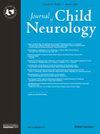Proceedings of the 45th Annual Meeting of the Southern Pediatric Neurology Society March 26, 2022, New Orleans, LA.
IF 1.6
4区 医学
Q3 CLINICAL NEUROLOGY
引用次数: 1
Abstract
Objective: This study aimed to assess patient experience with telemedicine in pediatric neurology and feasibility for increasing the number of telemedicine visits in Ochsner Louisiana State University Shreveport. Methods: Data from patient surveys were collected from 40 consecutive telemedicine visits after face-to-face meetings conducted over a secured conferencing service. Data collected included demographic details about age of the caregiver on the call, employment details, ease of use of the platform, duration of the visit, satisfaction with the visit, comfortabil-ity with the visit, prior experience with telehealth, and use of online shopping/banking. Results: Descriptive analysis was performed on the collected information, which revealed 85% of respondents were female, those aged <40 years comprised 48% and those aged ≥ 41 years were 52%, 62.5% reported prior use of telehealth within the past 3 months, and 92.5% were satis fi ed with patient education. Overall patient satisfaction (scale of 1-5, with 1 being the best and 5 as the worst) was 1.33 (SD 0.8), ease of access 1.35 (SD 0.86), and likelihood to request another virtual visit 1.70 (SD 0.9). Of the collected variables, age and comfort using mobile technology were statistically signi fi cant, with older age being negatively correlated with patient comfort using mobile technology ( P = .02). However, no statistically signi fi cant difference was noted when comparing age to patient satisfaction with virtual visits, ease of access, nor likelihood of requesting another virtual visit, indicating that patients can adapt to the telemedicine irrespective of age and usage of mobile technology. Conclusion: Overall patient satisfaction was high regardless of age, gender, and ethnicity, and use of mobile technology, suggesting that an expansion of telehealth services can improve patient accessibility and desire to use it beyond the current COVID-19 pandemic.第45届南方儿科神经学会年会论文集,2022年3月26日,新奥尔良,洛杉矶。
本文章由计算机程序翻译,如有差异,请以英文原文为准。
求助全文
约1分钟内获得全文
求助全文
来源期刊

Journal of Child Neurology
医学-临床神经学
CiteScore
4.20
自引率
5.30%
发文量
111
审稿时长
3-6 weeks
期刊介绍:
The Journal of Child Neurology (JCN) embraces peer-reviewed clinical and investigative studies from a wide-variety of neuroscience disciplines. Focusing on the needs of neurologic patients from birth to age 18 years, JCN covers topics ranging from assessment of new and changing therapies and procedures; diagnosis, evaluation, and management of neurologic, neuropsychiatric, and neurodevelopmental disorders; and pathophysiology of central nervous system diseases.
 求助内容:
求助内容: 应助结果提醒方式:
应助结果提醒方式:


